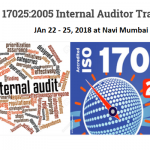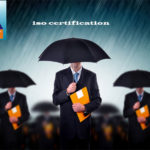ISO and the Environmental Sustainability
ISO is the International Organization for Standardization. It has a membership of 160 national institutes from countries large and small, industrialized, developing and in transition, in all regions of the world. ISO’s portfolio of more than 18,000 standards provides practical tools for all three dimensions of sustainable development: economic, environmental and societal. The ISO standards for business, government and society as a whole make a positive contribution to the world we live in. They ensure vital features such as quality, ecology, safety, economy, reliability, compatibility, interoperability, conformity, efficiency and effectiveness. They facilitate trade, spread knowledge, and share technological advances and good management practices.
Published under the designation of International Standards, ISO standards represent an international consensus on the state of the art in the technology or good practice concerned.
ISO has a multi-faceted approach to meeting the needs of all stakeholders from business, industry, governmental authorities and nongovernmental organizations, as well as consumers, in the field of the environment. ISO has developed:
1. Standards that help organizations to take a proactive approach to managing environmental issues: the ISO 14000 family of environmental management standards which can be implemented in any type of organization in either public or private sectors – from companies to administrations to public utilities.
2. ISO is helping to meet the challenges of climate change with standards for greenhouse gas accounting, verification and emissions trading, and for measuring the carbon footprint of products.
3. ISO develops normative documents to facilitate the fusion of business and environmental goals by encouraging the inclusion of environmental aspects in product design.
4. ISO offers a wide-ranging portfolio of standards for sampling and test methods to deal with specific environmental challenges. It has developed some 570 International Standards for the monitoring of such aspects as the quality of air, water and the soil, as well as noise, radiation, and for controlling the transport of dangerous goods. They also serve in a number of countries as the technical basis for environmental regulations.
Organizations around the world, as well as their stakeholders, are becoming increasingly aware of the need for environmental management, socially responsible behaviour, and sustainable growth and development.
Accordingly, as the proactive management of environmental aspects converges with enterprise risk management, corporate governance, and sound operational and financial practices and performance, International Standards are becoming increasingly important for organizations to work towards common and comparable environmental management practices to support the sustainability of their organizations, products, and services.
Furthermore, governments and regulatory bodies are increasingly looking to ISO standards to provide a framework to ensure alignment and consistency both nationally and internationally.
ISO International Standards and related normative documents provide consumers, regulators and organizations in both public and private sectors with environmental tools with the following characteristics:
– Technically credible as ISO standards represent the sum of knowledge of a broad pool of international expertise and stakeholders
– Fulfill stakeholder needs as the ISO standards development process is based on international input and consensus
– Facilitate the development of uniform requirements as the ISO standards development process is built on participation by its national member institutes from all regions of the world
– Promote efficiencies when the same standards are implemented across markets, sectors, and/or jurisdictions
– Support regulatory compliance when the standards are used to meet market and regulatory needs
– Enhance investor confidence because the standards can be used for conformity assessment such as by audit, inspection or certification. This enhances confidence in products, services and systems that can be demonstrated to conform to ISO standards and provides practical support for regulation.
ISO standards developed for Environmental Management covers the following areas:
• Environmental management systems
• Environmental auditing and related environmental investigations
• Environmental performance evaluation
• Environmental labelling
• Life cycle assessment
• Environmental communication
• Environmental aspects of product design and development
• Environmental aspects in product standards
• Terms and definitions
• Greenhouse gas management and related activities
• Measuring the carbon footprint of products.
The ISO 14000 family of standards reflects international consensus on good environmental and business practice that can be applied by organizations all over the world in their specific context. The ISO family of standards includes:
– ISO 14001 is the world’s most recognized framework for environmental management systems (EMS) -that helps organizations to manage better the impact of their activities on the environment and to demonstrate sound environmental management. ISO 14001 has been adopted as a national standard by more than half of the 160 national members of ISO and its use is encouraged by governments around the world.
– ISO 14004, which complements ISO 14001 by providing additional guidance and useful explanations.
– Environmental audits are important tools for assessing whether an EMS is properly implemented and maintained. The auditing standard, ISO 19011, is equally useful for EMS and quality management system audits. It provides guidance on principles of auditing, managing audit programmes, the conduct of audits and on the competence of auditors.
– ISO 14031 provides guidance on how an organization can evaluate its environmental performance. The standard also addresses the selection of suitable performance indicators, so that performance can be assessed against criteria set by management. This information can be used as a basis for internal and external reporting on environmental performance.
– The ISO 14020 series of standards addresses a range of different approaches to environmental labels and declarations, including eco-labels (seals of approval), self-declared environmental claims, and quantified environmental information about products and services.
– ISO 14001 addresses not only the environmental aspects of an organization’s processes, but also those of its products and services. Therefore ISO has developed additional tools to assist in addressing such aspects. Life-cycle assessment (LCA) is a tool for identifying and evaluating the environmental aspects of products and services from the “cradle to the graveâ€: from the extraction of resource inputs to the eventual disposal of the product or its waste. The ISO 14040 standards give guidelines on the principles and conduct of LCA studies that provide an organization with information on how to reduce the overall environmental impact of its products and services.
– ISO 14064 part 1, 2 and 3 are international greenhouse gas (GHG) accounting and verification standards which provide a set of clear and verifiable requirements to support organizations and proponents of GHG emission reduction projects.
– ISO 14065 complements ISO 14064 by specifying requirements to accredit or recognize organizational bodies that undertake GHG validation or verification using ISO 14064 or other relevant standards or specifications.
– ISO 14063 addresses environmental communication guidelines and examples, helps companies to make the important link to external stakeholders.







